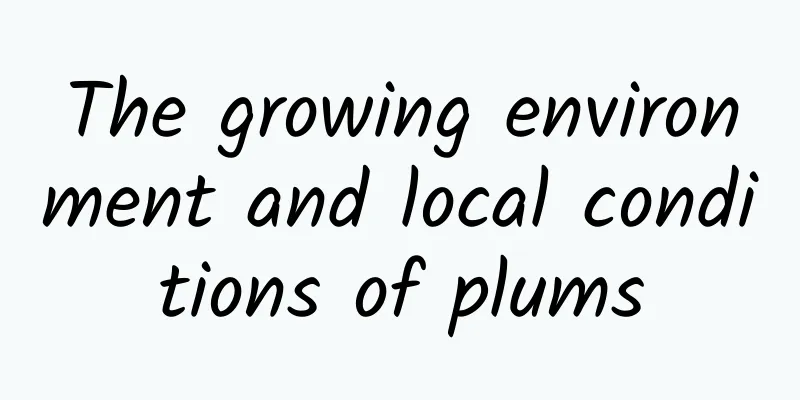The growing environment and local conditions of plums

Plum Growth Environment and ConditionsPlums are highly adaptable to soil that has a deep layer of soil, a certain degree of fertility, and slightly better drainage, and can be planted in any soil type. It is produced in Liaoning, Jilin, Shaanxi, Gansu, Shandong, Sichuan, Yunnan, Guizhou, Hunan, Hubei, Jiangsu, Zhejiang, Jiangxi, Fujian, Guangdong, Guangxi and Taiwan. It is commonly found in areas with an altitude of 400-2600 meters. It generally grows in hillside bushes, sparse woods in valleys, or by water, at the bottom of ditches, on roadsides, etc. It is distributed in both southern and northern China. Plum Growing ConditionsPlums prefer a moist environment with high air humidity and are extremely intolerant of waterlogging. Poor drainage in the orchard will lead to root rot, poor growth or more diseases. It is advisable to choose a place with loose soil, good drainage and air permeability, deep soil layer and low groundwater level for planting. Plum growing temperatureBefore the plums sprout, the temperature should be 15℃~22℃ during the day and not lower than 0℃ at night. The maximum temperature before flowering should not exceed 24℃ and the minimum should not be lower than 5℃. Note that you must do a good job of keeping warm at this time. Plum planting time and methodThe best time to plant plum seedlings in southern China is from November of the current year to early March of the following year. The seeds need to be germinated before planting. After planting in the soil, they should be covered with a thin layer of soil. You can use a spray bottle to spray a little water. After about five or six days, they will germinate and can be transplanted. The fruit setting rate of plums is relatively low, so pollination trees need to be configured during planting. Fruit-enhancing fertilizer needs to be applied during the hard core period when the fruit is forming the pit. The amount of fertilizer used accounts for 30% of the annual fertilizer application. The fruit-enhancing fertilizer is mainly fully decomposed compost, which can promote the enlargement of the fruit. |
<<: The growing environment and local conditions of Amomum villosum
>>: The growth environment and local conditions of bamboo fungus
Recommend
Rose, lisianthus...fresh flowers can also be propagated by cuttings. They will take root in 7 days and bloom in 1 month. You can make a lot of money!
Flower European rose cuttings In fact, the so-cal...
How to reproduce Impatiens and how to deal with seeds
1. Seed propagation 1. Sowing time: As long as th...
Lily cultivation methods and precautions
Lilies are loved by many flower lovers for their ...
How many years does it take for apple trees to bear fruit?
Apple planting results after several years Apples...
Breeding methods and precautions of Rhododendron edulis
1. Soil Rhododendron likes fertile, well-drained ...
How to water the nail orchid
Watering principles During the growth period, the...
The role of shell flower
The ornamental effect of shell flowers First of a...
How to plant lotus in winter
1. Winter planting method 1. Increase the tempera...
The best planting time for sweet potatoes and the high-yield cultivation techniques are suitable for which month
Sweet potato planting time The suitable growth te...
Common diseases of hibiscus and their prevention and control methods
Hibiscus leaf spot Hibiscus leaf spot is a fungal...
Can peach blossoms be soaked in water and drunk?
1. Can I soak it? Many friends must know its orna...
Methods and precautions for propagation of fortune tree by cuttings
How to propagate the fortune tree by cuttings The...
Breeding methods and breeding methods of broad-leaved phoenix
1. Maintenance methods 1. Soil: Broad-leaved Phoe...
How to prune Magnolia grandiflora
When to prune Magnolia grandiflora When is the be...
Rose soil requirements
1. Soil requirements 1. Soft: When growing roses,...









